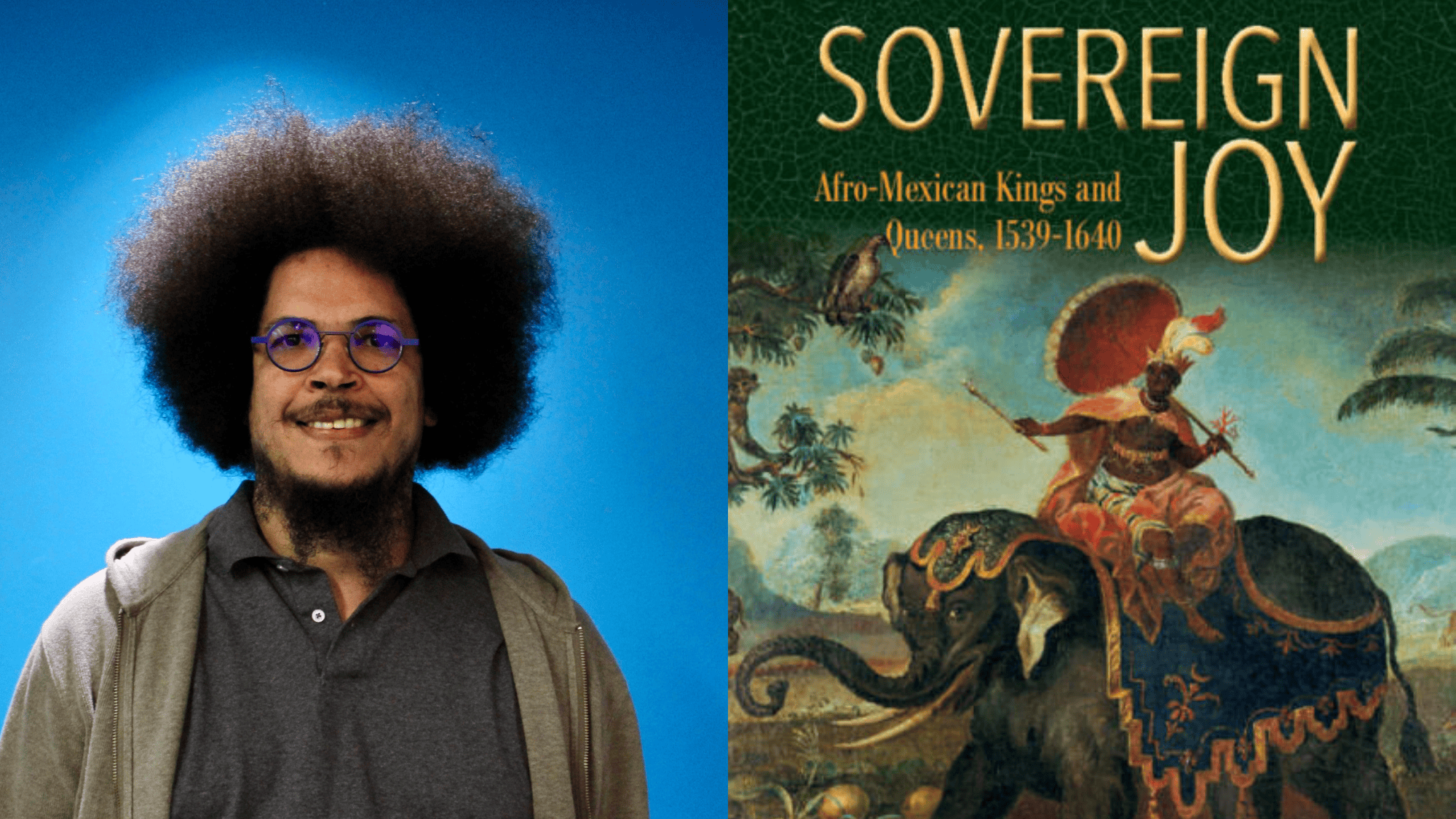Miguel Valerio’s ‘Sovereign Joy’ Featured in ‘Global Black Thought’
October 30, 2025

Associate professor’s book explores the performance of festive black kings and queens among Afro-Mexicans between 1539 and 1640.
By Lauren Hargrave
The School of Languages, Literatures, and Cultures (SLLC) is proud to announce that “Sovereign Joy: Afro-Mexican Kings and Queens, 1539–1640” (Cambridge University Press, 2022) by Associate Professor Miguel Valerio, has been featured in the journal “Global Black Thought” with responses from seven Black studies historians and literary scholars.
“I found its inclusion to be an important recognition of my book’s broad impact across the field of Black studies,” Valerio shared.
Valerio recently joined SLLC in Spring 2025 as an associate professor of Spanish and Portuguese. His research expertise includes African diaspora in the Iberian world and focuses on Black lay Catholic brotherhoods or confraternities and Afro-creole festive practices in colonial Latin America, especially Mexico and Brazil.
Published by the African American Intellectual History Society (AAIHS), “Global Black Thought” is devoted to the study of the Black intellectual tradition. The journal showcases original and deeply researched essays that explore Black ideas, theories and intellectuals in the United States and across the African diaspora.
“Sovereign Joy” is a multi-award-winning study recognized with the 2023 Alfred B. Thomas Award for Best Book and the Howard F. Cline Book Prize in Mexican History. The study explores the performances of festive Black kings and queens among Afro-Mexicans between 1539 and 1640 and examines how the first African and Afro-Creole people in colonial Mexico transformed their ancestral traditions into a shared Afro-Mexican identity. It focuses on how public festival participation served as both a form of cultural expression and a means of negotiating colonial hierarchies. By analyzing Afro-Mexican Catholic confraternities in literary texts and visual culture, Valerio reveals the complex meanings behind public processions that could simultaneously reinforce and subvert racial and social structures.
Images provided by Miguel Alejandro Valerio.

